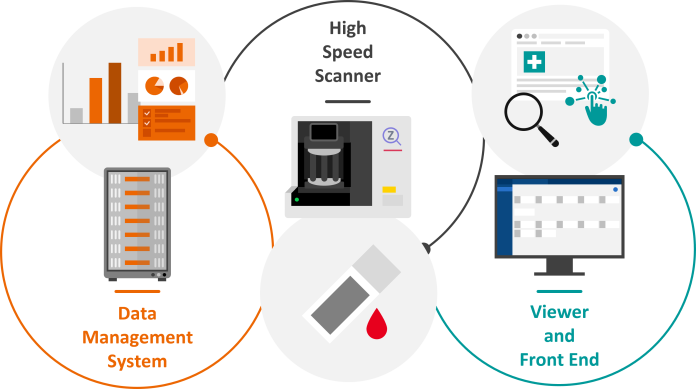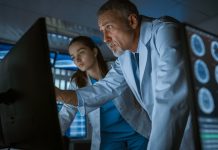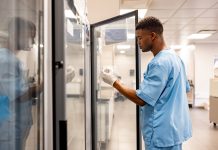Siemens Healthineers partnered with CLILAB Diagnòstics in Spain to digitalise pathology services and enhance efficiency amid rising workloads and staff shortages. Ben Reed, Syngo Business Manager at Siemens Healthineers, told us more
NHS pathology services perform over 1.12 billion tests yearly. Since 2007, the number of histopathology requests has increased by approximately 4.5% annually. Pathologists face increasing workloads, complexity, and a 10–12% vacancy rate. One promising strategy to address these challenges is digitalising pathology departments, as demonstrated by the collaboration between Siemens Healthineers and Spanish provider CLILAB Diagnòstics.
As elsewhere, the shortage of pathologists is an escalating problem in the Spanish region of Catalonia, where CLILAB Diagnòstics wants to improve the quality of its clinical work as well as the working conditions. This is crucial for counteracting the increasing workload and complexity, as the workforce is nearly stagnating.
Improved productivity – a competitive advantage for talent
Attracting and retaining skilled professionals is challenging, especially in the public sector, where its rigid remuneration system is noted by Rafael Comas Planas, Managing Director of CLILAB Diagnòstics. CLILAB partnered with Siemens Healthineers for a transformative digital pathology initiative.
“Digitalising the service and applying Artificial Intelligence criteria to the diagnosis will enable us, on the one hand, to increase the productivity of current staff, without increasing their current workload, supporting the homogenisation and standardisation of processes,” CLILAB Diagnòstics’ Managing Director says. Additionally, digitalisation is expected to allow for improved workload distribution, remote work options, and talent attraction. The move could help both retain and attract staff by increasing expertise and flexibility.
Great expectations for a digital future
Miguel Angel Benítez, CLILAB’s Medical Director, emphasises the dual focus of digital pathology: patient-centred care and operational efficiency. “The idea is to unify the whole laboratory to provide a good service to the patient.”
Benítez also notes the need to remain competitive: despite being publicly owned, CLILAB must remain profitable. Digital pathology will help increase output and visibility, potentially expanding their hospital network from five to eight. “Digitalisation will create a connected care network between all the hospitals that we serve.”
Cesar Chappuis de Oliveira, head of CLILAB’s Pathology Department, sees great promise in AI: “to resolve our difficulties and reach more diagnoses, to make them faster and more accurate. The clinical applications will be great and could herald in a new era in medicine – and I say that with absolute confidence.”
Digital tools can also improve the quality of diagnosis by standardising measures, reducing subjective error, and improving visualisation. “For example, with more advanced technologies and digitalisation, we can recognise more varied patterns of malignancy and notice those that have so far been unmatched.”
Streamlining pathology workflows
Digital imaging offers clear clinical advantages, according to Chappuis: “You can see the whole slide at once and reach a first impression about the diagnosis very quickly. This saves time. Then you have new tools at your disposal to reach more exact diagnoses. Consulting with specialists from other medical disciplines will also become easier and faster with the shared view function in the reading software.”
When it comes to workflow optimisation, he also expects major improvements. CLILAB’s pathology department handles approximately 110,000 samples and 140,000 slides annually – they also perform some diagnostics in molecular pathology, but are limited by staff shortages in this field.
AI tools can automate repetitive tasks, such as cell counting, thereby speeding up diagnoses and improving operations. “Digitalisation will drastically transform the way pathologists work,” says Chappuis. “We will have new tools at our disposal, new technologies, new opportunities for diagnosis, new data available to resolve more cases.”
Digital archives also support research and publication by building a curated digital database. The lab’s mission: to be a role model – and a benchmark – in the public health system.
Digital imaging as an alternative to the microscope
Chappuis acknowledges that while digital transformation may challenge some colleagues, most will adapt within a few days. “And in any case, there is no turning back,” he adds. Benefits include real-time online consultations, reduced commuting, and increased confidence in diagnosis. Remote work and better ergonomics are especially beneficial for senior staff.
Traditional microscopy can strain the eyes, neck, and back. “Digitalisation will let the pathologist disconnect from their microscope,” he says. Digital imaging reduces manual handling of slides, enhancing comfort and enabling remote work, which could help recruit pathologists from remote areas.
Alex Casalots, gastrointestinal pathology expert at CLILAB, agrees: “All the slides are conveniently accessible on the computer, and you don’t even have to be at the hospital.” Second opinions are also faster and easier: “Now slides do not need to be transferred physically anymore; pathologists can simply share the digitised slides.”
With Siemens Healthineers’ Syngo Carbon Pathology, pathologists can even access radiology data to form a holistic patient view. “There are many different types of lesions, many different types of cancers, histological types,” he explains. “And the big challenge is to make an accurate diagnosis. That, and trying to avoid any big mistakes.” Second opinions can make a crucial difference in complex cases.
Placing trust in a strong partner
Ultimately, trust and alignment matter in such major transformations. Siemens Healthineers was the best choice, agrees Managing Director Rafael Comas Planas: “For the process of digitalising pathology at CLILAB Diagnòstics, Cesar Chappuis de Oliveira approached different companies. In the end, he opted for Siemens Healthineers, because ‘they really listened to our needs and objectives. We needed a fast solution, and they understood the assignment. The company’s rich experience in digitalising healthcare was certainly a bonus.’”
Siemens Healthineers has long been a pioneer in the healthcare digitalisation space and watched radiologists move from light rooms to workstations, and helped them find new and exciting ways to make healthcare more equitable for patients. With their long history in digitalisation, they now want to do the same by enabling digital pathology and helping pathologists move from the microscope to the workstation with their Syngo Carbon Pathology offering.
As Siemens Healthineers blazes new trails in the digital pathology space, the collaboration with CLILAB Diagnòstics marks a significant milestone on the journey toward a new era of medicine.











